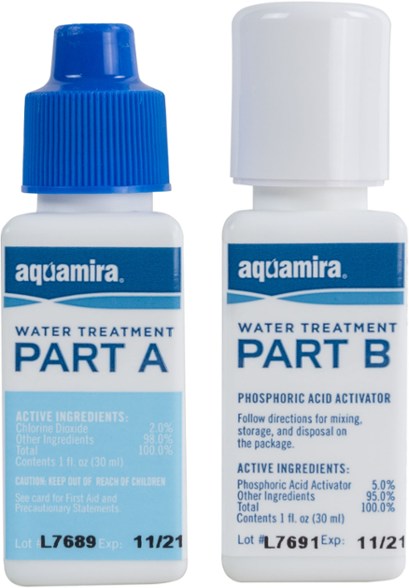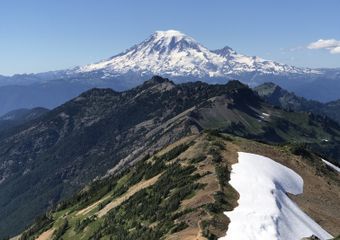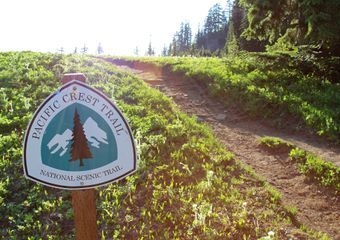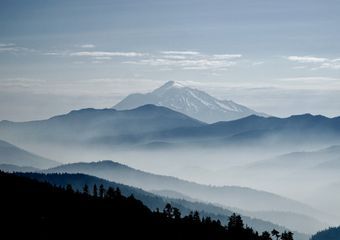How to Choose Your Stove and Water Purification for the Pacific Crest Trail
Aside from shelters and sleep systems on the PCT, you’ll need to eat and drink. In this post, we’ll cover stove and cookware choices, as well as water treatment options for a Pacific Crest Trail thru-hike.
Choosing Your Stove for the PCT
Going stoveless isn’t unheard of on the PCT. The desert days are hot, thus cooked food is not missed as much. Hot food requires water to boil, and you won’t always have water to spare. The PCT is especially prone to wildfire, so going stoveless is another way to make sure you aren’t the one who invokes Smokey Bear’s wrath.
Carrying a stove for hot meals has benefits. It can be rough watching your trail companions eat hot food, and postholing all day in the snowy Sierra will make even the hardiest hiker wish for a hot meal at the end of a long day.
If you decide to go with the stove route, the kind of stove you carry depends on fire regulations, fuel availability, and personal preference.

In high-fire years on the PCT, Forest Service regulations may require hikers to carry stoves with on/off valves. For most thru-hikers, this means canister stoves, as white gas stoves tend to be too heavy. Canister stoves tend to be heavier than other options, but cook faster. If you carry a canister stove, use your guidebooks to plan out a fuel resupply option. What towns will sell canisters? You may be able to mail yourself a fuel canister—but it will have to be declared to the shipping service and sent ground shipping.
In wet years, many PCT hikers enjoy using alcohol stoves. These can often be made for free from cat food or soda cans. You can use the available-at-every-gas-station HEET as fuel (gas line antifreeze—always use the yellow bottle, NOT the red). If you use an alcohol stove, always put your hand near the stove to feel for heat before adding more alcohol or touching the stove. Be careful not to accidentally kick your stove over. PCT hikers and their alcohol stoves have caused multiple forest fires on the PCT—not to mention ruined thousands of dollars of their gear and resulted in get-off-the-trail-now skin burns. Watch the YouTube videos and read instructions on how to use an alcohol stove before you hit the trail.
Whatever stove you go with, the PCT is a windy trail, so be sure to get a good windscreen. I like the Trail Designs Caldera Cone, which is a dual-purpose titanium windscreen/pot stand.
Best Stoves for the PCT
Trail Designs Caldera Keg-F system
MSRP: $60

MSR Pocket Rocket 2
MSRP: $45

Jetboil MiniMo
MSRP: $144

Snow Peak GigaPower
MSRP: $50

Alternately, you can make your own lightweight alcohol stove.
Treating Water on the PCT
As the number of hikers goes up on the PCT, so does the chance for contamination of even seemingly clean water sources. In the desert, many PCT hikers make the poor and uncool choice to camp right next to water sources and bury their poop nearby. To add to that, there are stories of irresponsible PCT hikers washing underwear right in the only natural water source for 30 miles! Plus, there’s plenty of cattle grazing along portions of the trail. As a result, a bunch of the water on this trail is not as clean as it looks… and a lot is as dirty as it looks. What this means for you is you should purify your water—or at least carry something that can deal with especially bad water.
Filters allow hikers to get clean water instantly. With chemicals, you have to wait 15 minutes to four hours. In the PCT desert, you’ll usually be thirsty enough that you don’t have 15 minutes to wait. That being said, chemicals are lighter than filters and don’t require maintenance. Chemicals, with the exception of bleach, are more expensive over the course of a thru-hike than many filters. When water resources are particularly nasty, you can pre-filter with a bandana, coffee filter, or fine mesh before running it through any filter or treatment system.
All hikers are going to want to carry extra water capacity on the PCT. Most hikers leave the Mexico terminus with at least six liters of water, and most carry the means for extra capacity than what they will regularly be using for a section. This allows flexibility to manage longer water carries as needed, or to carry water into a dry camp.
Best Water Treatment Options for the PCT
Sawyer Micro Squeeze
MSRP: $28

Katadyn BeFree
MSRP: $45

Aquamira
MSRP: $15
*Bleach drops work similarly, just be sure you know the ratio.

More on PCT Gear
This website contains affiliate links, which means The Trek may receive a percentage of any product or service you purchase using the links in the articles or advertisements. The buyer pays the same price as they would otherwise, and your purchase helps to support The Trek's ongoing goal to serve you quality backpacking advice and information. Thanks for your support!
To learn more, please visit the About This Site page.

 ">
">





Comments 3
For a discussion on water treatment, you should probably break it down into a discussion of treatment of the various types of pathogens (the different protozoans, bacteria, and viruses). The CDC has a good summary chart at
https://www.cdc.gov/healthywater/pdf/drinking/Backcountry_Water_Treatment.pdf
As they show, boiling solves all (except for heavy metals) and “If boiling water is not possible, a combination of filtration and chemical disinfection is the most effective pathogen reduction method”. Most hikers can’t boil all the time and most don’t do a combination of filtration/chemical so most play the probabilities game and aware of some risk.
Please don’t encourage alcohol stoves in California. Seems like you’re saying it’s ok this year because it’s a wet year. It is not. They are banned throughout the trail in California. Even low risks and wet years carry a risk of fires. We’ve seen too many.
Color me crazy but I’m awfully fond of my Silverfire wood burning stove. Little heavier than some other wood burners, but it has a bottom to catch embers.